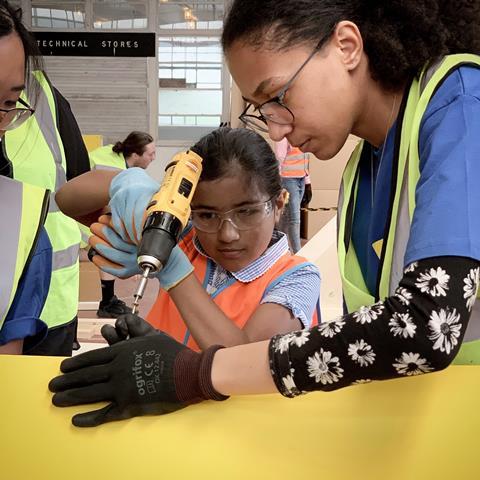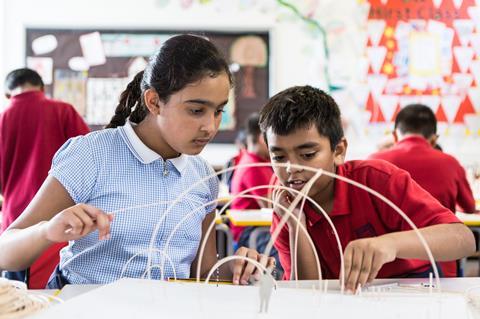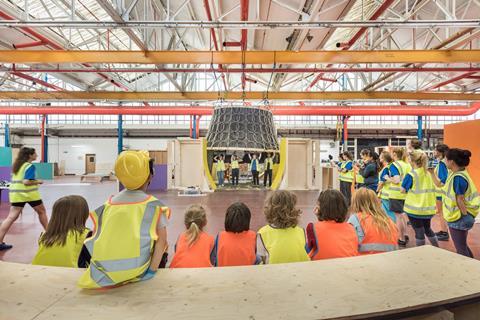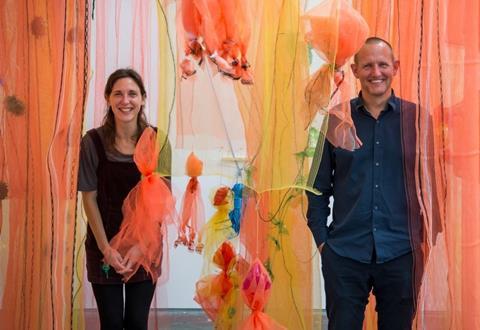Youth centres have been closed across the UK and fewer and fewer children are studying design for GCSE. Fiona MacDonald and Matt Springett make a rallying cry for change

Why do so few clients seem to value the contribution of the people and communities architects are designing for? And what should you do if your client just doesn’t appreciate the value that meaningful engagement with the end user can bring to the design process? If we want to challenge such attitudes, we need to bring about change, but achieving this shift isn’t always as straightforward as it perhaps should be.
Let’s take a step back to understand why we are in this situation. Our worldview, including beliefs and opinions, starts to form during childhood, as we are brought up within a particular developmental context. These are reinforced over time by our peer groups and the cultural influences that we are exposed to.
These beliefs influence how we think of ourselves and how we interact with the world. Clearly, if we want to change attitudes to the built environment, focussing on young people is a good place to start.
So let’s take a look at what are we encouraging young people growing up in 2022 to think about their built environment. And we don’t mean the schools or institutions in which they have to compliantly fit – we mean spaces where young people can be themselves, engage with their communities and develop their own voice and identity.
Since 2010, more than 4,500 youth work jobs have been cut and 760 youth centres have closed. What message does this send young people? Where are the spaces for them?

At MATT+FIONA, we believe that for young people to have a stake in their built environment, they need spaces where they have been actively engaged in the design process, and which they can call their own. For the future health and diversity of the UK, we also need to be demonstrating that there is a route into the built environment professions for all of our young people.
Our methods of engaging young people centre on them having the opportunity to set the brief for the spaces they use. We invite them to design them, and then – where possible – be directly involved in the fabrication of those places. We think there is no substitute for this first-hand experience, which we call ‘Build’.
Our work has grown into two more strands: ‘Learn’ and ‘Connect’. Connect supports place-makers to bring young people’s voices to the table when making the decisions about our future neighbourhoods. Learn enables us to reach more young people through the process of ‘training the trainer’ (teachers, youth workers and other built environment professionals) and ensuring follow up routes into apprenticeships.
When children see they have the skills to help influence the built environment, or even to become an architect or a contractor themselves, they also discover that they too can have agency in their lives and the world around them.

So the next time you find yourself trying to persuade the person with the purse-strings that a long-term, community engaged view to design is best for people, planet, and in fact their wallet, maybe go back to the source of the issue: the lack of appreciation for the impact of design in the UK, which spans back to most people’s childhoods.
At MATT+FIONA we understand that in order to engender change we need to embed different ways of thinking about our built environment at a much earlier age. We think our national curriculum should include opportunities to understand how decisions about our built environment are made, so young people can become informed citizens - and in turn make the built environment professions truly welcoming, representative and accessible to people from all walks of life.
In 2019 there were 7.6 million 10-19 year olds in the UK. In our first six years, MATT+FIONA has directly worked with over 3,000 young people. We don’t think that’s bad for an organisation that, until recently, was run by the equivalent of one full time role, split across four part time people. There are other organisations doing similar things: PlacEd, Beyond the Box, Accelerate, POoR Collective, Resolve, Urban Learners, Yes Make London, Archimake, Soho Lights, Ardagh Young Creatives and a handful of others. Apologies to those we’ve missed here.

Let’s be generous and assume that together we are reaching 76,000 young people each year. That’s not even 1% of young people in the UK, a drop in the ocean. And yet we are often forced into competition for funding, against a backdrop of creativity being stripped from the school curriculum: between 2010 and 2020 there was a 66% decline in the uptake of Design & Technology at GCSE and a 33% drop for Art & Design.
It is not all doom and gloom. We can see around us the positive contribution the more enlightened local authorities are having in their partnerships and negotiations with developers. Voice Opportunity Power, initiated by Grosvenor, ZCD Architects, the Town and Country Planning Association and Sports England, establishes a benchmark and blueprint for a more equitable engagement with communities, and is proving to be a useful advocate for real change.
Now in its second year, the Greater London Authority’s Design Future London Challenge has engaged 11 to 25 year olds at 21% of schools and colleges in London. It is programmes like this that are bringing the conversation to the table and opening the eyes of young people to the importance of decision making about their cities.

Hats off to the Thornton Education Trust and its annual awards for raising the profile of organisations and schemes that engage young people positively in their built environment and make the case for this simultaneous bottom-up and top-down approach through rewarding the activists, enactors and decision makers alike.
Clearly long-term thinking alone isn’t enough. Initiatives such as Public Practice that aim to bring a greater appreciation for good design into the planning and local authority systems are also vital. It is ideas like this that are achieving a step-change in influencing the decision-makers in local authorities.
They, in turn, have influence over the developers and place makers who deliver, thereby providing skills to those who have not yet been introduced to the value of new ways of engagement. We all need to work in tandem to bring about the scale of change needed
So, what are we saying? Fund everyone doing their best to open-up the built environment - literally and metaphorically - to young people and the wider communities in which they can, and must, become genuine participants.
If you can’t afford to fund this work, then roll up your sleeves and take part. Particularly if you live and work outside London, where these opportunities for young people are even harder to access.
And vote for it. Advocate for bringing your skills, knowledge and perspective back into our school curriculum and classrooms through foundational policy change the next time the ballot box allows.

Postscript
Fiona MacDonald is the former Head of Learning at the Design Museum and is a founder and director of MATT+FIONA
Matthew Springett is principal of London based architectural practice, MSA and a founder and director of MATT+FIONA
















No comments yet